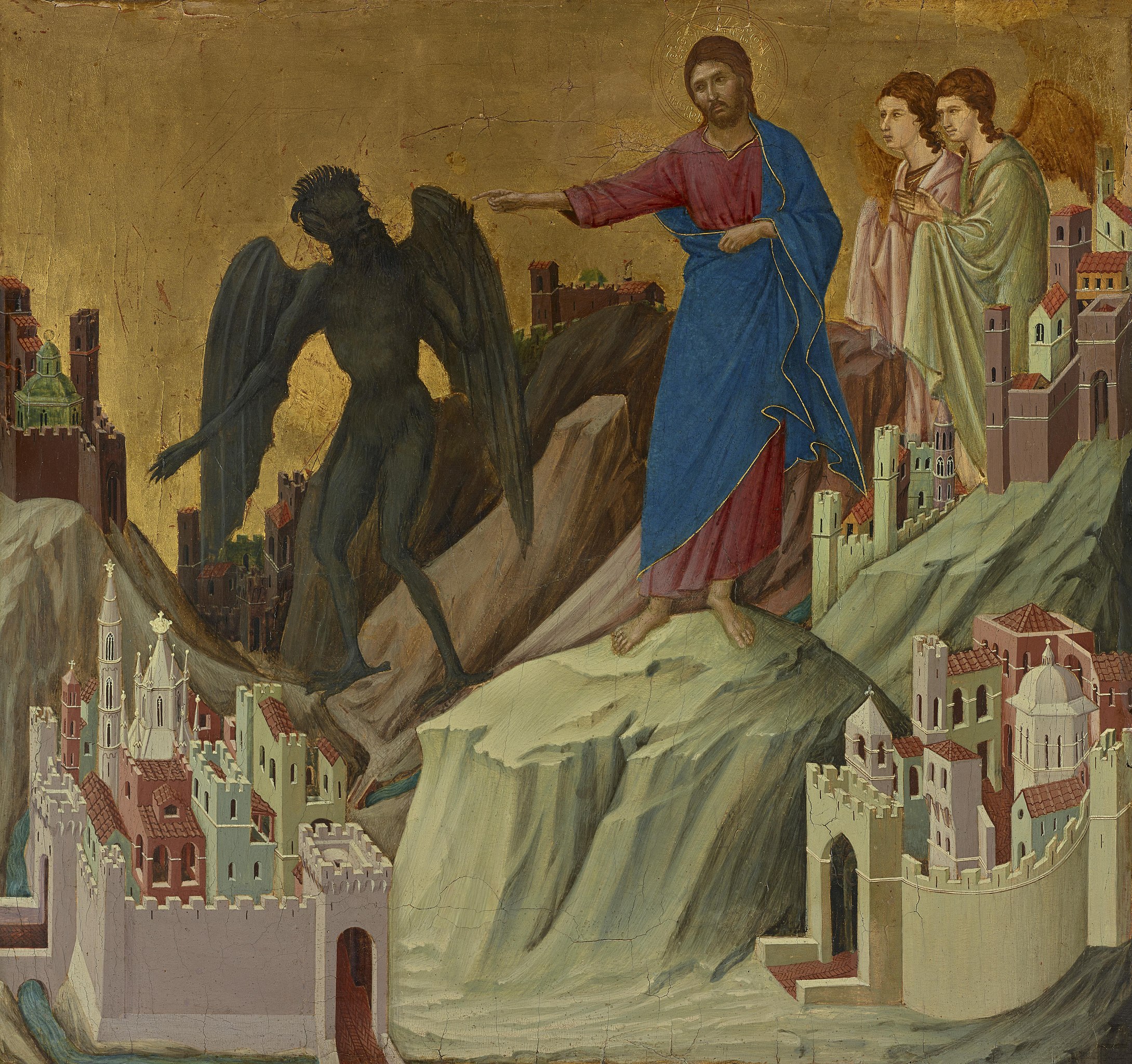First Sunday in Lent
Saved from the Time of Trial
Luke 4:1-13
First Sunday in Lent
Analysis by Chris Repp
1“Jesus, full of the Holy Spirit, returned from the Jordan and was led by the Spirit in the wilderness, 2 where for forty days he was tempted by the devil. He ate nothing at all during those days, and when they were over, he was famished. 3 The devil said to him, “If you are the Son of God, command this stone to become a loaf of bread.” 4 Jesus answered him, “It is written, ‘One does not live by bread alone.’”
5 Then the devil led him up and showed him in an instant all the kingdoms of the world. 6 And the devil said to him, “To you I will give their glory and all this authority; for it has been given over to me, and I give it to anyone I please. 7 If you, then, will worship me, it will all be yours.” 8 Jesus answered him, “It is written,
‘Worship the Lord your God,
and serve only him.’”
9 Then the devil took him to Jerusalem, and placed him on the pinnacle of the temple, saying to him, “If you are the Son of God, throw yourself down from here, 10 for it is written,
‘He will command his angels concerning you,
to protect you,’
11 and
‘On their hands they will bear you up,
so that you will not dash your foot against a stone.’”
12 Jesus answered him, “It is said, ‘Do not put the Lord your God to the test.’” 13 When the devil had finished every test, he departed from him until an opportune time.

By Duccio di Buoninsegna – Web Gallery of Art: Image Info about artwork, Public Domain, https://commons.wikimedia.org/w/index.php?curid=3207996
Jesus endures his trial to save us from a trial that we would surely fail if not for him. God’s will, and not ours, is the only way to life. To be sure, it is a way that leads to death, but then also through death to resurrection.
DIAGNOSIS: Playing God
Step 1: Initial Diagnosis (External Problem): Serving Ourselves
The devil left at the end of this encounter and waited for an “opportune time.” That time came at Jesus’ crucifixion (Luke 23:35ff.), but no devil is mentioned there. None was needed. The same words tripped easily off the tongues of those who crucified him, those who were crucified with him, and those who were just looking on. “If you are the Son of God…” “If you are the Messiah of God…” “If you are the king of the Jews… save yourself! And us too!” That’s because these words of the devil are our words too. “Serve yourself!” we say to Jesus, “That’s what we do whenever we get any kind of power. And you’ve got lots of power. So, go on, use it!”
Step 2: Advanced Diagnosis (Internal Problem): Trusting Other Gods
We know how the world works. If you don’t look out for yourself, no one else will. That’s just the way it is. And like the sun rising in the east, we trust that it will always be so. Imagining that you can change the way the world works by extraordinary acts of piety, or by prayer, or faithfulness to God, is delusional at best. And why would you want to, anyway? Things generally work out well for those who have power.
Step 3: Final Diagnosis (Eternal Problem): Putting God to the Test
With such faith in the world-as-it-is, we are quick to counsel Jesus: “If God is even there at all, (I mean, that’s an open question, right?) then make God work for you. You’ve been out here forty days. The Bible says God will help you. Take God up on that. ‘Name it and claim it.’ Get yourself a sandwich. Turn God from God’s agenda to yours.” Jesus’ response, here and at his crucifixion (Luke 23:32-46), is not with his own words but with the words of Scripture, and it signals his steadfast trust in God. “Into your hands I commend my spirit,” he says from the cross, quoting Psalm 31. “The Lord preserves the faithful, but abundantly repays the one who acts haughtily,” says the psalm later (v. 32). Our blasphemy, and our doom, are exposed.

Photo by Josh Applegate on Unsplash
PROGNOSIS: Confessing that God Is God
Step 4: Initial Prognosis (Eternal Solution): Saved from the Time of Trial
G“Father, forgive them; for they do not know what they are doing.” These are also Jesus’ words from the cross as he takes upon himself the overwhelming debt we owe. Here God’s power is made known in weakness. He endures his trial to save us from a trial that we would surely fail if not for him. God’s will, and not ours, is the only way to life. To be sure, it is a way that leads to death, but then also through death to resurrection. All other ways, those ways we so enthusiastically urged on Jesus, end badly.
Step 5: Advanced Prognosis (Internal Solution): Led by the Spirit
Baptized into Jesus’ death and resurrection, we are sealed by the Holy Spirit and marked with the cross of Christ forever. That same Spirit draws us out of our self-centered agendas and into God’s loving, self-giving agenda on behalf of the world, giving us confidence in the promise of our baptism that we belong to Christ and share his life.
Step 6: Final Prognosis (External Solution): Serving God
Trusting in the promise of our baptism, we are led into the wildernesses of the world where the devil is still up to his old tricks. Only now we see them for the deadly lies they are, and we parry the devil’s assaults with gospel. We live now not by bread alone but by the Word of God, and it is that bread of life we now urge upon the world.